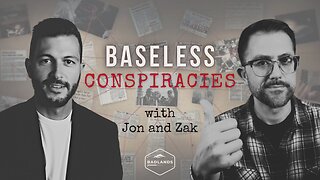Premium Only Content

Moon Phase and Libration South Up 2014
Lunar Reconnaissance Orbiter (LRO) has been in orbit around the Moon since the summer of 2009. Its laser altimeter (LOLA) and camera (LROC) are recording the rugged, airless lunar terrain in exceptional detail, making it possible to visualize the Moon with unprecedented fidelity. This is especially evident in the long shadows cast near the terminator, or day-night line. The pummeled, craggy landscape thrown into high relief at the terminator would be impossible to recreate in the computer without global terrain maps like those from LRO.
The Moon always keeps the same face to us, but not exactly the same face. Because of the tilt and shape of its orbit, we see the Moon from slightly different angles over the course of a month. When a month is compressed into 24 seconds, as it is in this animation, our changing view of the Moon makes it look like it's wobbling. This wobble is called libration.
The word comes from the Latin for "balance scale" (as does the name of the zodiac constellation Libra) and refers to the way such a scale tips up and down on alternating sides. The sub-Earth point gives the amount of libration in longitude and latitude. The sub-Earth point is also the apparent center of the Moon's disk and the location on the Moon where the Earth is directly overhead.
The Moon is subject to other motions as well. It appears to roll back and forth around the sub-Earth point. The roll angle is given by the position angle of the axis, which is the angle of the Moon's north pole relative to celestial north. The Moon also approaches and recedes from us, appearing to grow and shrink. The two extremes, called perigee (near) and apogee (far), differ by more than 10%.
The most noticed monthly variation in the Moon's appearance is the cycle of phases, caused by the changing angle of the Sun as the Moon orbits the Earth. The cycle begins with the waxing (growing) crescent Moon visible in the west just after sunset. By first quarter, the Moon is high in the sky at sunset and sets around midnight. The full Moon rises at sunset and is high in the sky at midnight. The third quarter Moon is often surprisingly conspicuous in the daylit western sky long after sunrise.
Celestial south is up in these images, corresponding to the view from the southern hemisphere. The descriptions of the print resolution stills also assume a southern hemisphere orientation.
-

Badlands Media
10 hours agoBaseless Conspiracies Ep. 156
57K11 -

Inverted World Live
5 hours ago700 Scientists and Faith Leaders Warn About Super-Intelligent AI, "Time is Running Out" | Ep. 130
48.4K4 -
 2:50:47
2:50:47
TimcastIRL
4 hours agoFOOD STAMPS OVER, Ending Nov 1, Food RIOTS May Spark Trump INSURRECTION ACT | Timcast IRL
196K88 -
 2:18:46
2:18:46
Tucker Carlson
4 hours agoTucker Carlson Interviews Nick Fuentes
60.3K305 -
 LIVE
LIVE
Drew Hernandez
13 hours agoCANDACE OWENS CALLS CHARLIE KIRK STAFF INTO QUESTION?
1,270 watching -
 47:03
47:03
Barry Cunningham
6 hours agoPRESIDENT TRUMP MEETS WITH THE PRIME MINISTER OF JAPAN!! AND MORE NEWS!
30.8K27 -
 1:18:29
1:18:29
Flyover Conservatives
22 hours agoThe Dollar Devaluation Playbook: Gold, Bitcoin… and the “Genius Act” - Andy Schectman | FOC Show
20.9K3 -
 LIVE
LIVE
SpartakusLIVE
6 hours agoWZ Tonight || Battlefield 6 BATTLE ROYALE Tomorrow!
302 watching -

megimu32
4 hours agoON THE SUBJECT: Halloween Nostalgia! LET’S GET SPOOKY! 👻
21.1K1 -
 1:24:56
1:24:56
Glenn Greenwald
6 hours agoThe Unhinged Reactions to Zohran's Rise; Dems Struggle to Find a Personality; DHS, on Laura Loomer's Orders, Arrests UK Journalist and Israel Critic | SYSTEM UPDATE #538
113K62